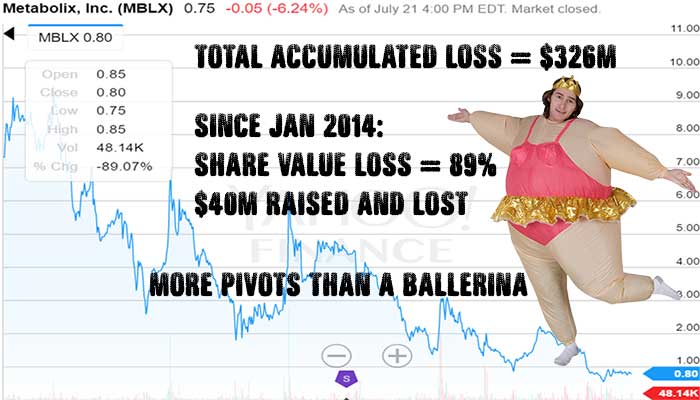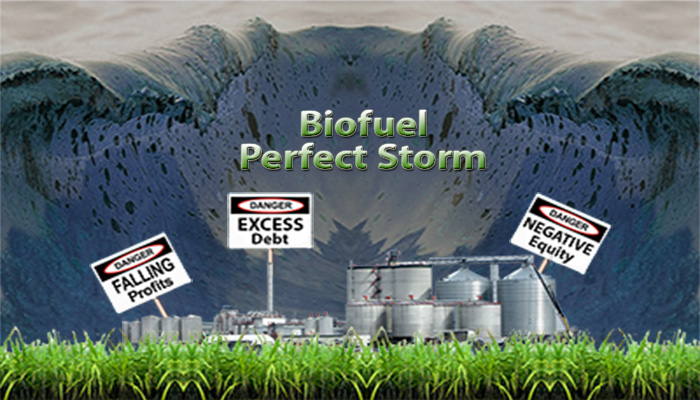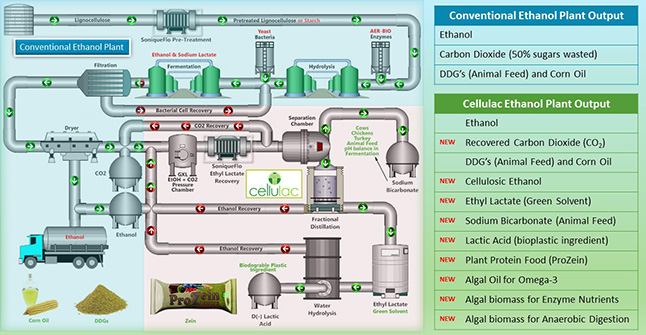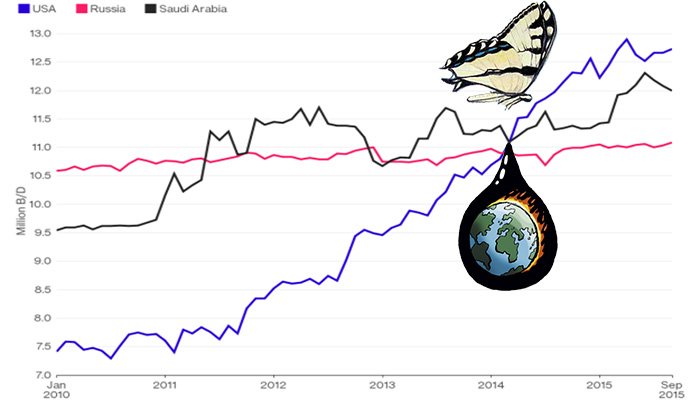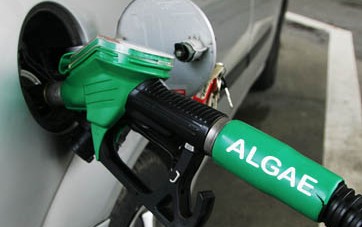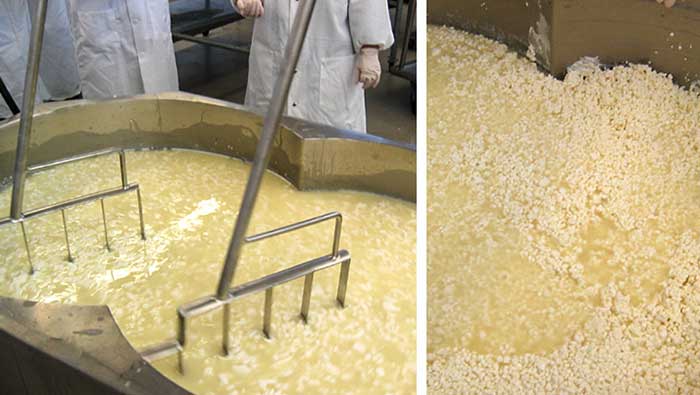Ethanol Industry is not too big to Fail
Phonetically speaking we know the two things that are guaranteed are death and taxes. However debt can be the precursor to death for not just companies, but industries. The ethanol industry, reading through the last 2 years of SEC filings by ADM, indicate that Ethanol has had a negative effect on their profits. In 2014 their bio-products profit decreased $69 million to a $120 million loss and interestingly in 2015 this segment operating profit was down a further 16%, due primarily to weaker ethanol margins and lower volumes. They also noted that processed volumes of corn were decreased in response to high ethanol industry production which outpaced demand throughout the year. This was on top of loss provisions of $45 million related to sugar ethanol facilities in Brazil. So easy to swallow up debt and allow for loss provisions when part of a corporation with the risk spread across multiple commodities.
Interestingly enough, the U.S. Energy Information Administration has released the April 2016 edition of its Short-Term Energy Outlook, predicting ethanol production this year will increase when compared to 2015 levels.

The ethanol market in the US is made up of 195 production facilities most of which are not part of large corporations. The 16-17 months in 2013-14 were bumper months for margins in the ethanol industry and those plants who paid down their debt are more likely to be able to manage a route through the current down turn in profit margins. However, in the middle size companies it can be more important to watch the debt to equity ratios far more than the stock prices. Margins are in the single digit percentages and are unlikely to increase at all this year. Subject to oil price continuing to remain low and volume remaining high this has a likelihood of continuing into 2017.
In contrast to the last 10 years there is an expected reduction in the export program where Europe are expected to maintain their tariff duties and balance their demand with adequate supplies. China too bears no favors to the industry where they are piling on the pain with anti-dumping tariffs for US DDG’s.
Turning over billions of dollars mean nothing more than being a large hamster going nowhere in a very big wheel if your profits are not there to service the debt. Nothing is guaranteed other than death and taxes, not even if it is a natural resource. Look at the coal industry. St. Louis-based coal producer Peabody Energy is the latest coal producer recently to file for bankruptcy. This follows Arch Coal, Alpha Natural Resources, Patriot Coal, and Walter Energy. Peabody’s used to have a market cap in excess of $20 billion just a few years ago. Debt in the oil industry also being a burden saw Energy XXI from a stock price of $32 to close recently at $0.12c.
The ethanol industry may not wish to acknowledge it but the RFS is only a mid-term support. Low oil prices, increased energy efficiencies in the car industry and heavy lobbying from the oil industry are unlikely to assist forcing any blend increase beyond the 10% wall. Over the last 10 years the industry has survived two dramatic drops in energy prices, though none as sustained as the current one. There is still some weeding out of the older generation plants and E85 is purely aspirational, no matter how many open letters from Governors and Senators are written. Diversification beyond ethanol and DDG’s is paramount to the survival and indeed longevity of the industry. Just squeezing 1-2% ethanol and DDG’s or corn oil is merely polishing the edges.
[TheChamp-FB-Comments style=”background-color:#f7f7f7;” title=”Leave a Comment”]
Integumen License Ageement
Today, Cellulac announces that it has signed Heads of Terms to enter into a commercial technology agreement with Integumen (LSE: SKIN). In addition, Integumen has conditionally agreed to acquire 9.35% of the issued shares of Cellulac. Gerard Brandon and Camillus...
What are you doing about ocean pollution?
To many people watching Sky News and their #OceanFree Campaign, you would think that removing plastic from the oceans will be enough to resolve the problem. Sadly, this is not the case. The oceans ability to provide food from fisheries and aquaculture is...
Climate Change Our Bit Infographic
[TheChamp-FB-Comments style="background-color:#f7f7f7;" title="Leave a Comment"]
Biomassive Revolution
It's just not your fault What if I were to tell you that it is not your fault that the seas are polluted with plastic that the fish and whales are consuming? In the same way, I can say that it is not your fault that over-fishing is destroying future fish...
Daring to Dream Big
The definition of insanity is doing the same thing over and over again and expecting a different result - Albert Einstein Another 300 million tonnes of plastic every year Since World War II we have consumed 5 billion tonnes of plastic, much of which has ended...
Low Energy Microalgae to Biofuel at Commercial Scale
Food and Fuel for the 21st Century Microalgae have come to the attention of the industrial and academic community over recent years because of their ability to harvest the energy of the sun and provide valuable molecules that offer great potential to provide...
Cellulac Formally Requests Metabolix Shareholders to Consider Merger Proposal
Cellulac merger proposal to Metabolix worth $40m in assets and offtake agreement of $38m rejected in favor of closing biopolymer business and spending $35m over 7 years on crop science project with no revenue. DEAR METABOLIX SHAREHOLDERS London, UK. 25th...
Extracting real value from the Ethanol Industry
Hybrid Solutions There is no need to reinvent a billion dollar wheel of bio-industrial experimental development. True value can be extracted and integrated as hybrid synergistic solutions from the best-in-class of what already exists. Over the last 10...
Have we Reached Peak Biofuel?
Is there really an energy security risk? Former NATO Secretary General Anders Fogh Rasmussen is calling on Europe to increase the production of biofuels from an energy security perspective because of geopolitical risks. This is a tough ask if such increase in...
Biofuels Perfect Storm
Biofuels Perfect Storm Since August 2015, ethanol has traded at a premium to gasoline which is unusual by historical standards. This is likely to continue until oil prices rebound into the $45-50 per barrel range. Even with this situation, 2015 ethanol...
High Corn Crush Margin Ethanol Plant Solution
The ethanol industry has only been around for the last few of decades, though in its present state it takes centuries of fermentation knowledge to achieve the same output of ethyl alcohol (ethanol).Today, there are by-products or side-streams, such as distilled...
Corny Problem for EU Sugar Producers
The abolition of sugar quotas in 2017 will have such a profound effect on EU sugar producers, used to super profits under the EU supported Common Agricultural Policy (CAP), that many smaller producers will be subject to consolidation or have to cease...
Big Oil Can’t Alter Climate Change
In a recent major MIT Study (Covert, Thomas, Michael Greenstone, and Christopher R. Knittel. 2016. "Will We Ever Stop Using Fossil Fuels?" Journal of Economic Perspectives, 30(1): 117-38. ) it was shown that approximately 65 percent of global greenhouse gas...
Butterfly Effect of Oil Price on Renewables
The butterfly effect is a concept that small causes can have large effects. Initially, it was used with weather prediction but later the term became a metaphor used in and out of science. Now it can easily be related to a single decision made by a Saudi Oil...
Cellulac Acquires Aer Sustainable Energy (Aer-Bio)
10 fold saving in enzymes, 4 fold increase in algae oils within 2 hours reducing the process costs of Omega-3, animal feed and biofuels Dublin, Ireland, 18th May 2015: Cellulac, the industrial biochemicals company, today announces the acquisition of Aer...
5 year, €35m Pharmafilter Partnership with Cellulac
Partnership delivers 2nd generation bioplastics supply chain solution for hospitals Dundalk, Ireland and Amsterdam, The Netherlands, 30th March 2015: Cellulac, the industrial biochemicals company, and Pharmafilter, a provider of integrated waste management...
Lactic Acid from Lactose Whey in World First Continuous Production runs
Cambridge, UK. 19 May 2014: Cellulac, the industrial biochemicals company is delighted to announce the world’s first ever industrial level continuous production of lactic acid from deproteinized lactose whey. Our 10 day production run concluded this week and...
Cellulac to Acquire Patent Portfolio and Industrial Biochemical Equipment from Pursuit Dynamics PLC
Cellulac Limited, the industrial biochemicals company, announces the acquisition of Pursuit Marine Drive Limited, a subsidiary of Pursuit Dynamics PLC, subject to shareholder approval. The acquisition includes certain intellectual property rights, test...








